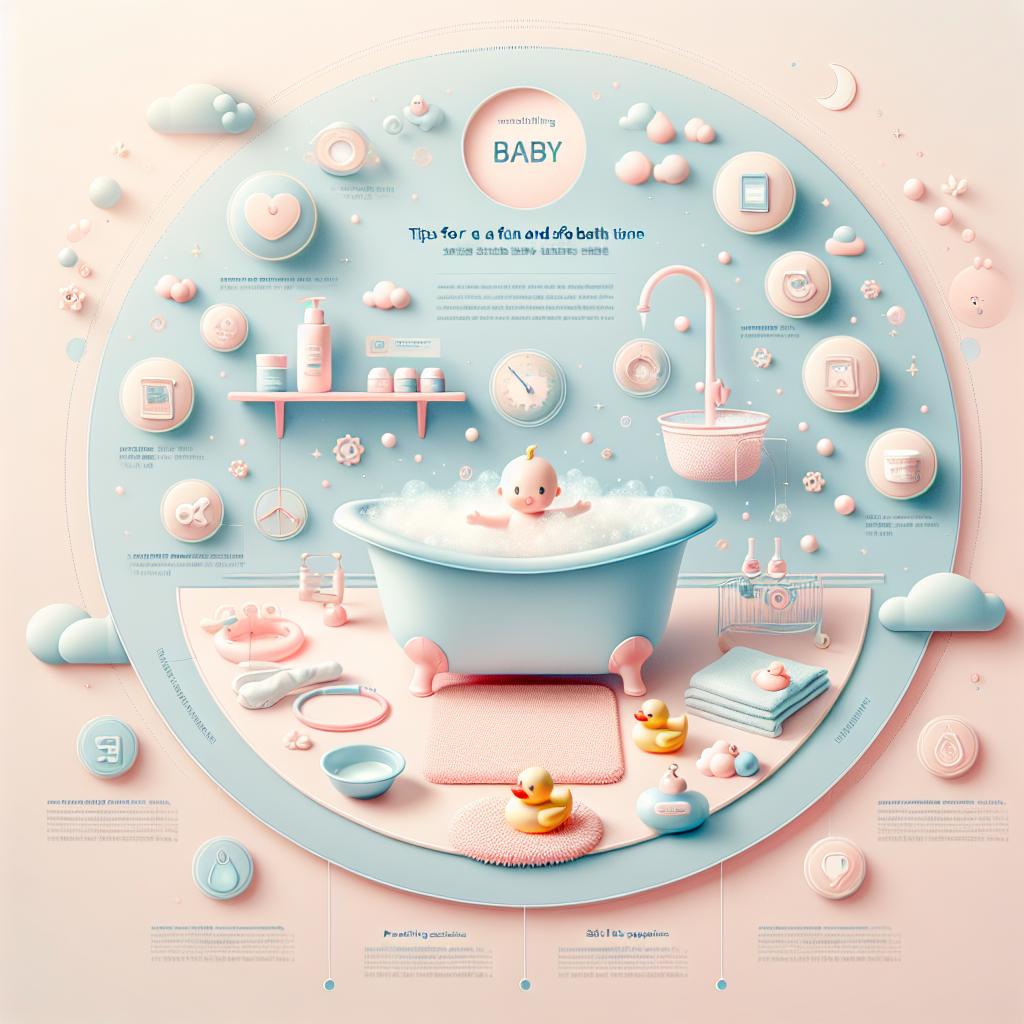Tips for Ensuring a Safe Bathing Experience
Bathing a baby can be an exciting time, filled with fun splashes and adorable giggles. But it can also be a challenging task, especially for new parents who might feel a bit nervous. This is why incorporating safe bathing practices is essential for preventing accidents and ensuring your baby’s hygiene. Here are some baby bath time tips to help you navigate this precious routine.
Understanding Baby Safety in a Bath
When it comes to safe bathing practices, one crucial point to understand is the importance of never leaving your baby unattended in the bath. Even if your baby is using a baby bath or bath seat, it is essential to keep a watchful eye on them at all times. Babies can quickly slip or tip over, leading to potentially dangerous situations.
Additionally, maintain a moderate water temperature of around 37-38 degrees Celsius (98.6-100.4 Fahrenheit) to prevent scalding.
Don’t forget to ensure your baby’s safety even after bath time by following safe sleep guidelines.
Tips for Enjoyable and Safe Baby Bath Time
Implementing the right baby bath time tips can transform this regular routine into a fun bonding session with your little one, while still prioritizing safety.
- Preparation is key: Before you even start the bath, make sure you have all necessary items nearby. This includes baby wash, a clean towel, a fresh diaper, and a change of clothes.
- Use the right soap: Babies have sensitive skin, so use a mild, tear-free soap to avoid any discomfort or allergic reactions.
- Embrace bath toys: Colourful bath toys can keep your baby entertained and distracted while you give them a thorough clean. Just be sure to wash these toys regularly to avoid any possible build-up of germs.
- Establish a routine: Babies thrive on routines. Having a consistent bath time can help your baby feel more relaxed and might even improve their sleep patterns.
Dealing with Baby Bath Time Mishaps
Despite our best efforts, accidents can happen. Babies are notorious for their unpredictable nature, and this can lead to a few surprises during bath time! It’s essential to handle such situations calmly and safely.
If your baby accidentally urinates or defecates while in the bath, you might wonder whether you need to restart the bath. This helpful discussion on Quora provides insights on what to do when such situations arise.
You may also wish to read this article on Worms and Germs about handling baby-related accidents safely, even when they involve your pets!
Hygiene Practices for Babies
Contrary to popular belief, babies don’t require daily baths. Infrequent bathing might actually be healthier for your baby’s skin, as it can help maintain its natural oils. This guide at the Raising Children Network can help you understand more about baby hygiene and the best cleaning practices.
Investing in your little one’s sensory development is another excellent way to boost their overall growth. Why not incorporate some everyday items for sensory play after their bath time?
Remember, every baby is unique, and what works for one might not work for another. Stay patient, flexible, and open to learning as you embark on this joyous journey of parenthood.
The Importance of Bath Safety: Why it Matters
Bathing babies comes with some risks; water-related accidents can have serious consequences. By being mindful of safe bathing practices, you ensure your baby’s safety while promoting a positive environment. Your approach towards bath time can influence how your little one relates to water as they grow older. Starting with a safe and enjoyable experience can set them up for a lifelong love of water. Visit Tower Health for more comprehensive bath safety tips for babies and toddlers.
Adapting to Your Baby’s Needs
Caregivers need to adapt bathing techniques and practices as the baby grows. What works for newborns may not suit toddlers; each age and developmental stage requires specific precautions and approaches to guarantee a secure bathing experience.
- Handling the Fear of Water: If your baby shows an aversion to water, introduce them gradually. Start with sponge baths before transitioning to shallow water. Keep soothing them verbally and maintain eye contact to reassure them.
- Dealing with Slippery Situations: Babies tend to get slippery once soap is applied. Always keep one hand on your baby to maintain support and control.
- Adapting to their Growing Independence: As babies explore and develop motor skills, they might wish to play more during bath times. Allow these explorations under watchful supervision. Bath time can become an opportunity for their development.
Visit Stay Safe for more insights and safety precautions for infant safety during bath times.
Fostering a Healthy Bath Environment
The bathroom environment should be as safe as possible. Keep harmful substances out of reach, secure loose fixtures, and ensure electrical appliances are unplugged or out of the room. Water should always be tested before immersing your baby in it. And always use bathtubs or bathing seats that are in good condition.
Moving beyond just safety, you can transform your bathroom into a soothing environment. Soft lighting, warm colors, and engaging bath toys can create a relaxing atmosphere. Remember, when your baby feels comfortable, bath time becomes less challenging and more enjoyable. Refer to the link Better Health Victoria for comprehensive advice on child safety and injury prevention.
A Final Note: Always Stay Present
Your baby’s safety depends on your alertness. With the right measures in place, you can turn bath time into a cherished, secure routine that your baby looks forward to. Keep in mind that every child is unique and could react differently to bath times. Thus, stay patient and remain a source of comfort for your baby.
Remember, while your baby stays clean and safe, bath time also presents an opportunity to create loving memories. The NHS provides a comprehensive guide on washing and bathing your baby here.
The journey of parenting sprinkled with these endearing moments is bound to be delightful and fulfilling!
